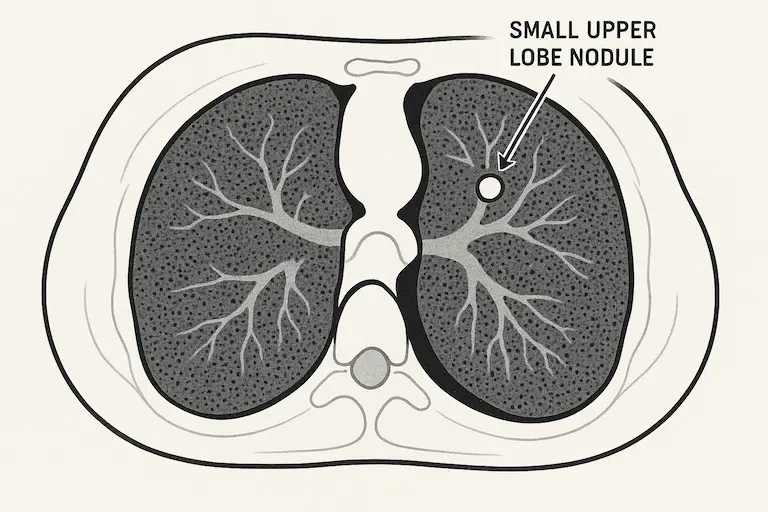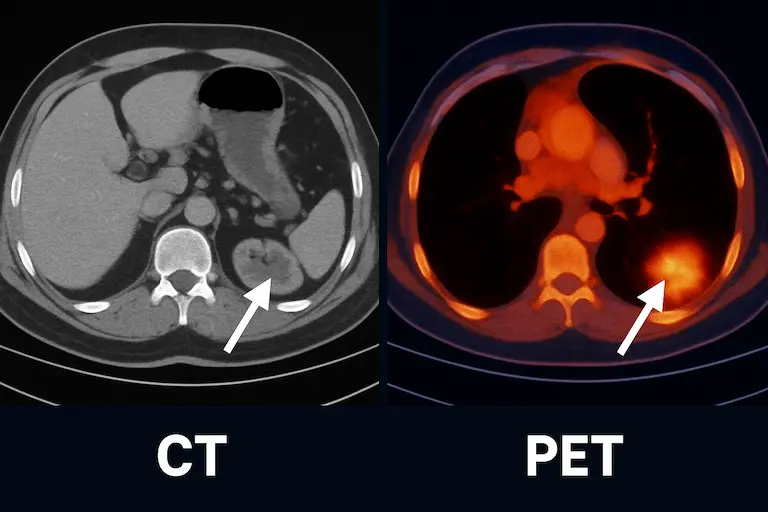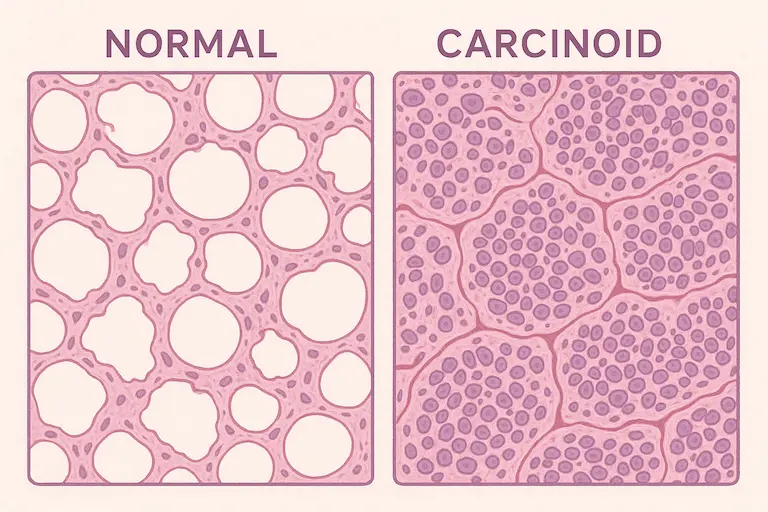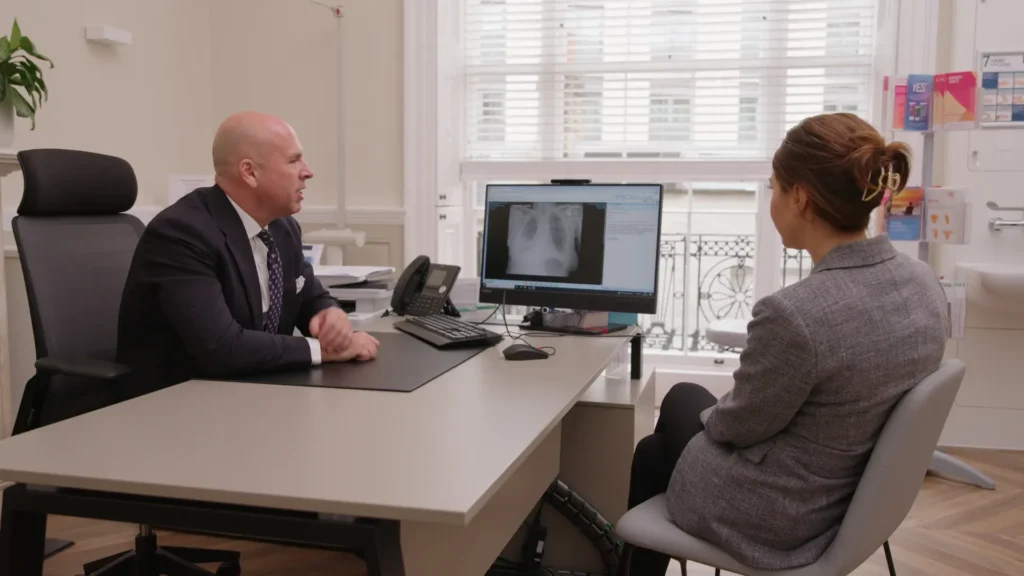By Marco Scarci, Consultant Thoracic Surgeon
When patients come to me for a second opinion in thoracic surgery, it’s rarely just about the diagnosis. It’s about clarity. Reassurance. Sometimes it’s about doubt—“Have we missed something?” “Is there another option?” My job isn’t to undermine the first opinion—it’s to make sure you have all the right information, fully understood, before making any major decision.
Let me walk you through how I approach a second-opinion case—and what I’m really looking for when I review your history, your scans, and your pathway so far.
A Real Case (Anonymised)
Let’s take “Mr W”, a 67-year-old retired lorry driver. He came to see me after being told he needed a right upper lobectomy for a 2.3cm lung nodule. The plan seemed reasonable—but he wanted to “double-check.”

Here’s how I broke it down.
1. First, the Timeline and Context
Before I even look at your scans, I want to understand:
- When the nodule was first seen
- Whether it’s changed over time
- What your symptoms are (if any)
- Your general fitness—can your lungs and heart handle surgery?

In Mr W’s case, his CT was done after a persistent cough. No weight loss, no haemoptysis. No change in nodule size over three months—but PET showed moderate uptake. So we’re in that grey zone.
2. The CT & PET: What I Really Look For
When I open your scans, I’m not just looking at the report—I review the images myself.
This detailed image review is a key part of how I evaluate a second opinion in thoracic surgery, helping me understand what really matters in CT and PET results.
Here’s what I check:

- Exact location: Is the nodule central or peripheral? Close to vessels or airways? This affects whether we can do keyhole surgery.
- Margins: Spiculated edges raise suspicion. Smooth? Could still be benign.
- Calcification: A small dot of calcium can suggest an old granuloma—not cancer.
- Lymph nodes: Are they enlarged? Do they show uptake on PET?
- Other lesions: Is this truly a single problem, or are there satellite nodules that change the entire story?
In Mr W’s scan, the PET uptake was borderline—not classic for malignancy. No lymphadenopathy. But the location was favourable for a VATS lobectomy if we decided to go ahead.
3. Histology and Pitfalls
He hadn’t had a biopsy yet—just imaging. But I reviewed the MDT notes and histo-path planning.

Here’s a key point I always raise: Do we need tissue first, or is surgery the right first step?
In some cases, a biopsy could delay things without changing the outcome. In others, it avoids unnecessary surgery. For Mr W, I ordered a CT-guided biopsy. It came back as an atypical carcinoid—not what anyone expected. A slower-growing tumour, managed very differently. Reviews like this are exactly why many patients seek a second opinion in thoracic surgery—to confirm the right diagnosis and avoid unnecessary procedures.
4. What Others Miss
Sometimes it’s about details. Here are common issues I spot during second opinions:
- Mislabelled scans: Left vs right confusion happens more than you’d think.
- Overcalling PET uptake: Not everything that lights up is cancer—post-infective changes can fool even experienced radiologists.
- Underestimating fitness: A patient may “look fine,” but if their lung function is borderline, they won’t do well post-lobectomy. This must be assessed properly.
- Missing the bigger picture: Is this just about the nodule, or are we missing a paraneoplastic syndrome? A prior cancer history?
5. My Job in a 2nd Opinion
I’m here to ask:
- Are we making the right diagnosis?
- Is the treatment plan safe for this individual?
- Have we ruled out safer, more appropriate options?
- Have we clearly explained the risks and choices?
Sometimes my conclusion is: “Yes, your team got it exactly right.” Other times, I offer an alternate path. Either way, you leave knowing you’ve been heard, examined thoroughly, and given a complete picture.
Final Thought
If you’re considering a second opinion in thoracic surgery, do it not because you distrust your team—but because you deserve confidence. Medicine is complex. Two experts may approach the same problem differently. That’s not failure—that’s perspective.
My job is to give you clarity. No rush. No pressure. Just the facts, the options, and the time to decide what’s best for you.
